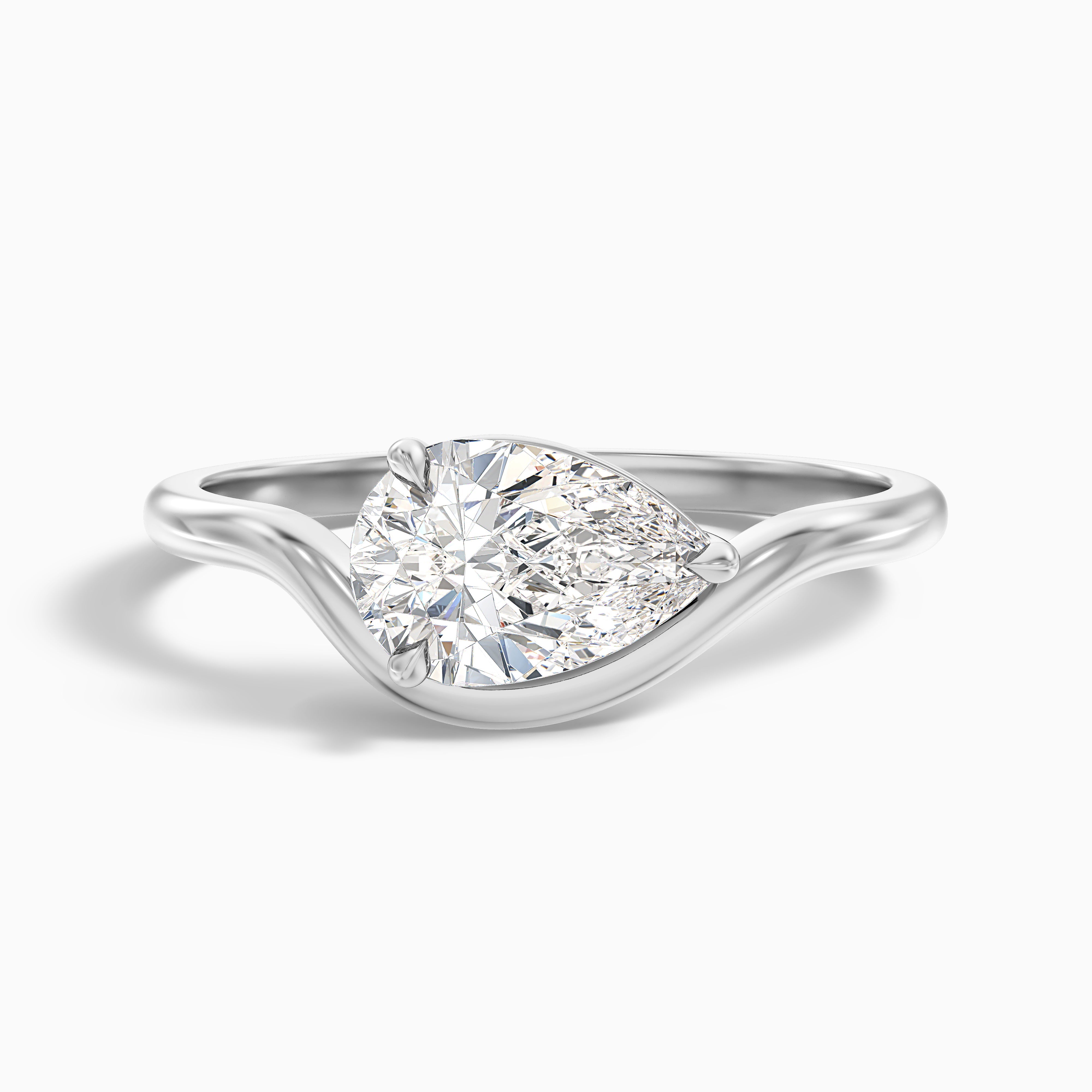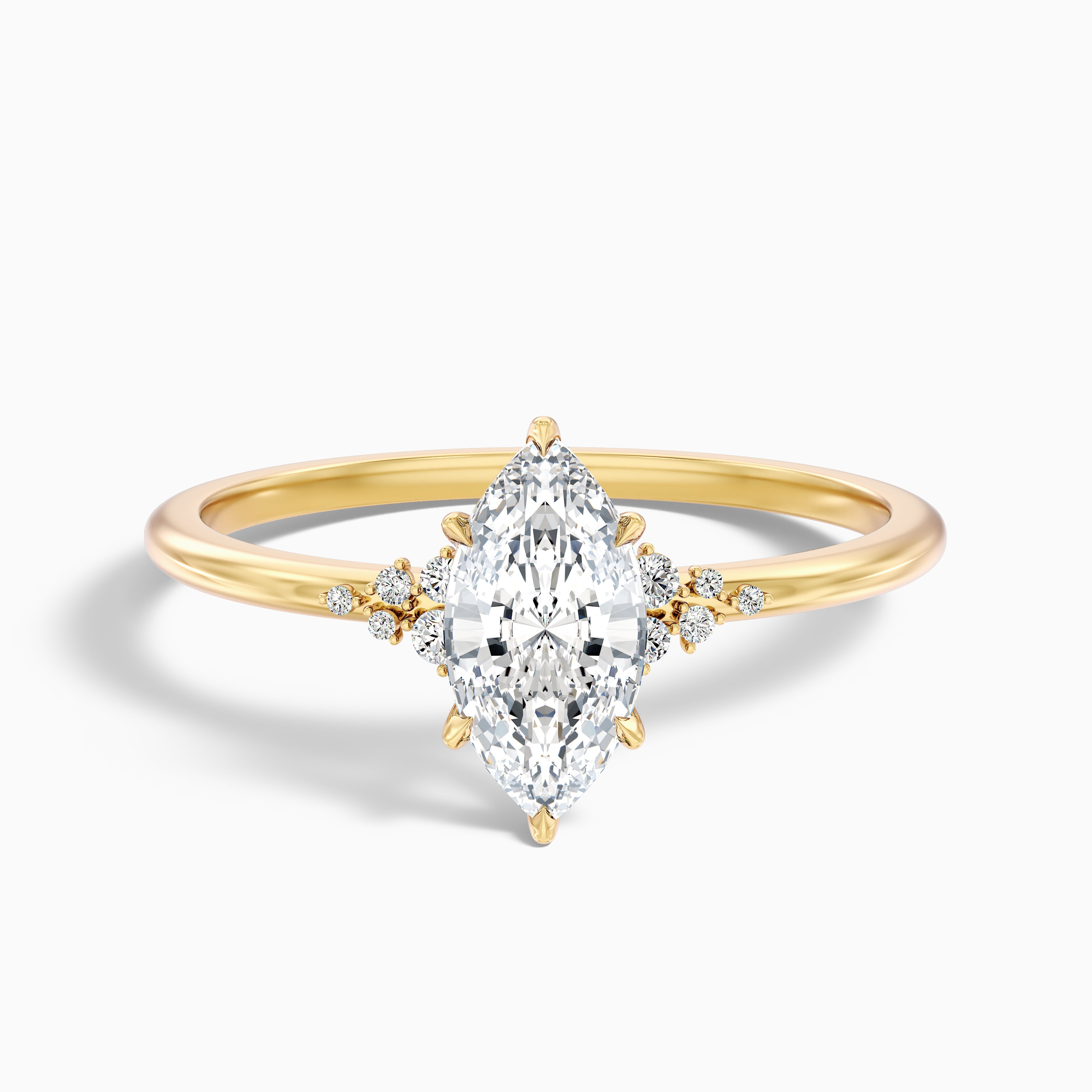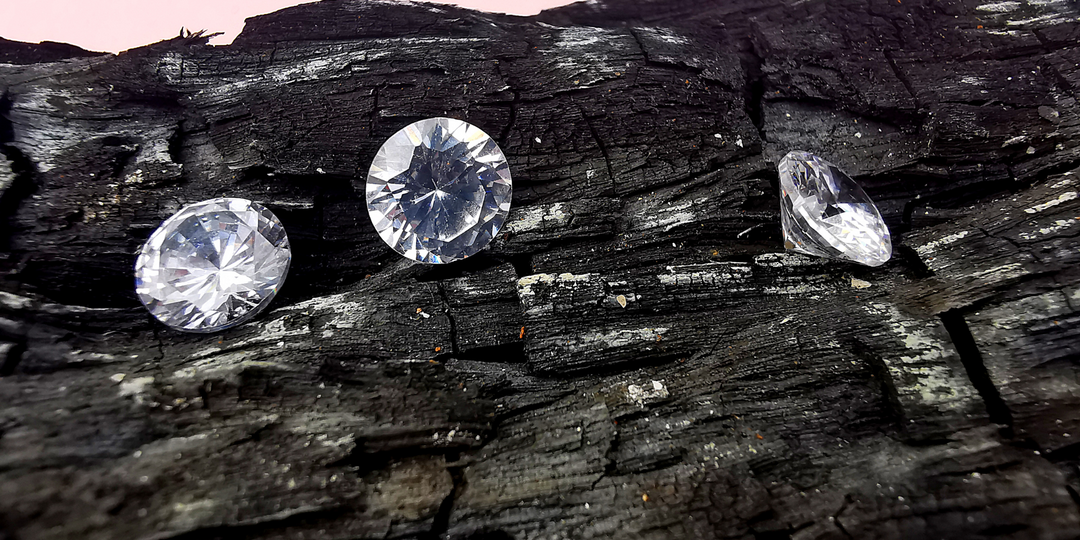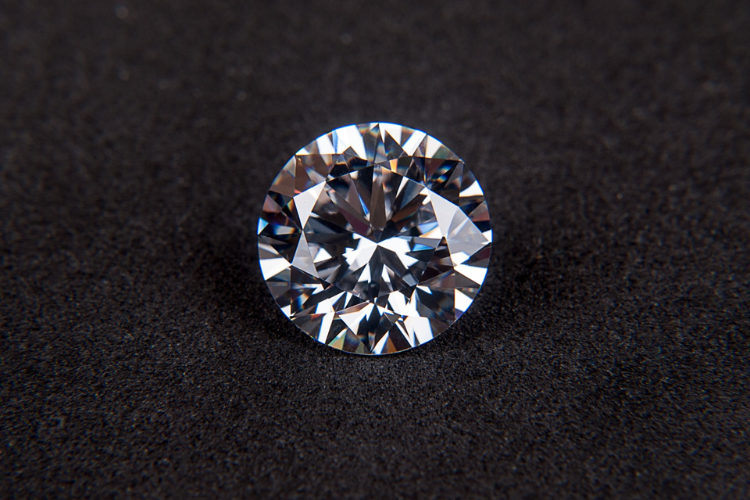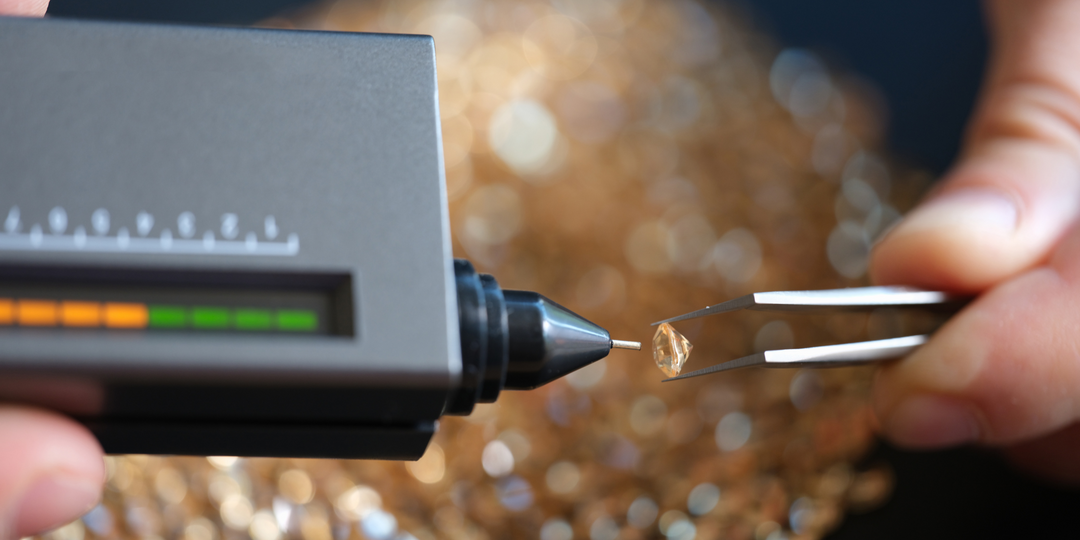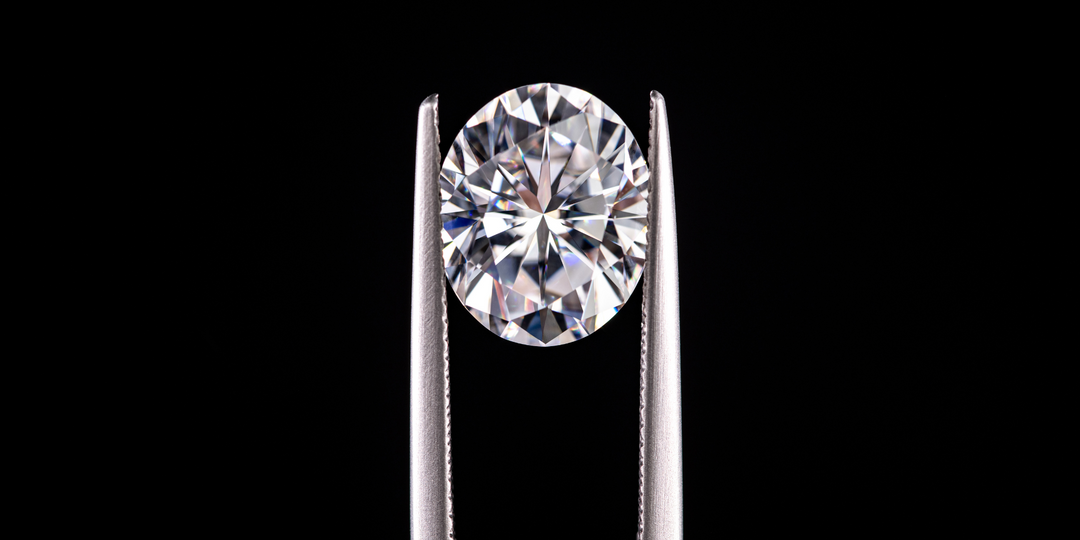Moissanite Facts: Discover What Makes This Gemstone Unique?
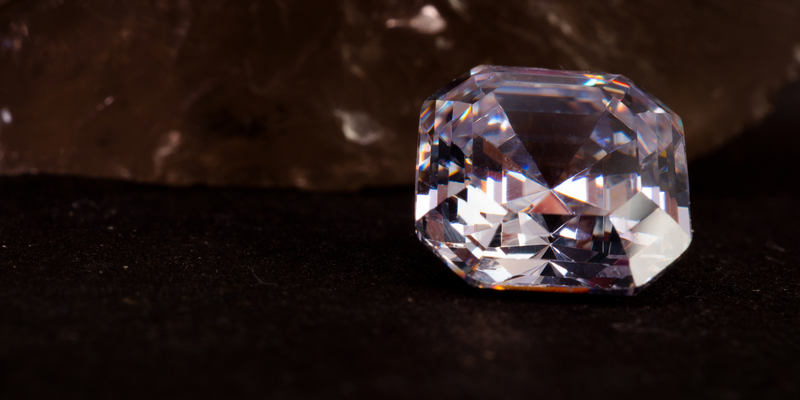
Diamonds have been the most popular choice in fine jewelry for a long time. There is, however, a wonderful alternative that is winning hearts and turning heads: Moissanite. This phenomenal gemstone offers excellent brilliance and toughness at a fraction of a diamond’s price, and is increasingly becoming a favorite among savvy shoppers and conscious consumers. Let's explore what Moissanite is and why it might be the perfect choice for your next jewelry purchase.
What is Moissanite?

Moissanite has a story that begins among the stars. In 1893, Nobel prize-winning scientist Henri Moissan made an amazing discovery while researching samples from a crater in Arizona caused by a meteorite. He found microscopic particles that he had previously believed were diamonds. Years later, these particles were identified as naturally occurring silicon carbide crystals, which we now call Moissanite.
Natural Moissanite is incredibly rare on Earth. So, you may ask, “Where does Moissanite come from?” While tiny particles of natural Moissanite can be found in meteorites and certain mineral deposits, it's so scarce that virtually all Moissanite available today is lab-created.
This is not "fake"; in fact, it is chemically indistinguishable from the real material, much as lab-grown diamonds are from mined diamonds. Raw Moissanite, in its base form, is an unpolished crystalline structure that needs a professional jeweler to cut and polish out its natural brilliance.
The unique characteristics of Moissanite (silicon carbide, SiC) are due to its distinct chemical composition. This crystal structure is what gives Moissanite its special look and feel, making it a good substitute for diamonds.
Exceptional Brilliance and Fire
The remarkable sparkle of Moissanite is its most well-known feature. The word jewelers use for this quality is brilliance, the white light that reflects from the surface and interior of a gemstone. Moissanite has a refractive index between 2.65 and 2.69, much higher than that of a diamond, 2.42. In layman’s terms, Moissanite bends light far more dramatically than a diamond does, so it is exceptionally bright in poor light.
But the real difference between Moissanite and diamonds is their “fire”, the rainbow flashes of colored light that occur when light passes through the stone. Owing to its peculiar double refraction property, Moissanite spreads light into its spectral colors more intensely than any other popular gemstone. The result? A fantastic sight of flashing color shows up on the stone's surface.
This amazing optical performance enables Moissanite to retain its sparkle in any lighting conditions. Unlike some diamond alternatives that may appear dull in low light, Moissanite does not lose its lustre, whether you are in low light such as under fluorescent office lights, soft candlelight, or natural sunlight. This consistent performance is also why the fans of Moissanite are so passionate about what they have chosen.
Durability and Hardness
For jewelry that is supposed to last a lifetime, durability is important, and Moissanite is great at it. Gemstone hardness is measured on the Mohs scale, with diamond at the top with a ranking of 10. Moissanite gets an amazing 9.25, which makes it the second hardest gemstone used in jewelry, surpassing sapphires and rubies (9) and far exceeding other popular stones like emerald (7.5-8) and quartz (7).
Such remarkable hardness entails remarkable scratch resistance. Although no gemstone is totally scratch-proof, Moissanite can stand up to the abrasions of ordinary wear with only slight damage. It also has great chip and break resistance due to its tough crystalline structure.
Durability factor is especially important for engagement rings and other pieces of daily wear. A Moissanite engagement ring will stand the test of time for decades of continuous wear, surviving the daily rigors of life, whether it’s cleaning the house or spending time outdoors. This resilience makes it a perfect investment for jewelry that is supposed to represent a lifetime commitment.
Affordability Compared to Diamonds
One of the best things about Moissanite is that it does not cost much. It usually costs 80–90% less than diamonds of the same size and quality. This striking price difference is not the result of a compromise on beauty or quality, but the result of variant market forces and production processes.
Larger stones make the value proposition even more apparent. As diamond prices grow exponentially with carat size, Moissanite price increases more linearly. This means that you can usually buy a two carat Moissanite for a lot less than a one carat diamond.
This affordability makes exciting possibilities for customization options. With Moissanite, you can more often than not afford a larger center stone, a more elaborate setting, or additional accent stones, design options that are not financially possible with diamonds.
Many couples opt to invest the savings in other things, such as their wedding, honeymoon, or future together, whilst enjoying a gorgeous, high-quality gemstone that will last a lifetime.
Eco Friendly and Ethical
Moissanite is a sensible choice in today's society, as people are becoming more concerned about the environment and ethics. Because it is made in a lab, it does not harm the environment as much as mined diamonds do. No land disruption, habitat destruction, or ecosystem damage is associated with Moissanite production.
There is equal ethical appeal. Moissanite is assuredly conflict-free, with no relation to the human rights problems that have plagued parts of the diamond industry. When you buy Moissanite, you can be sure your beautiful gemstone has not funded conflict or exploitation.
For consumers who care about sustainability, Moissanite is one of the most perfect combinations of luxury with responsibility. It enables you to experience exceptional beauty and quality, all the while being environmentally and ethically conscious. This mixture of conscience and luxury makes Moissanite especially attractive to younger generations of jewelry buyers, whose choices of buying are guided by sustainability.
Color and Clarity Facts
As with diamonds, Moissanite is graded for both color and clarity, although the grading systems are a little different. Modern Moissanite comes in various color grades ranging from absolutely colorless (D-E-F equivalent) to near colorless (G-H-I equivalent). Some Moissanite may have a hint of color under specific light, most often warm tones that may show as being slightly yellow or gray.
In terms of clarity, premium Moissanite seems to be eye clean, which means one cannot see any inclusions with the naked eye. This can be compared with VS (Very Slightly Included) or better diamonds. Since Moissanite is synthesized in laboratory-controlled conditions, it typically has fewer inclusions than those formed naturally.
In visual comparison, most people cannot tell the difference between Moissanite and a diamond of high quality without special equipment. The differences between Moissanite and diamonds are most evident in their “bright fire”, which is the multicolored bursts of light that are stronger in Moissanite. In certain light, its twofold refraction may also provide unique glitter effects that make it stand out.
Popular Uses in Jewelry
Moissanite is beautiful, durable, and affordable, and it meets current criteria for ethical sourcing and environmental responsibility. It combines scientific innovation with visual elegance. Whether you are attracted to its unparalleled brilliance and fire, its incredible durability, or its ethical source, Moissanite is a great substitute for traditional diamond jewelry.
As more consumers become aware of its unique mix of qualities, this amazing gemstone keeps glowing brighter in the world of jewelry. Although Moissanite initially rose to prominence as a diamond substitute for engagement rings, its versatility has seen it occupy a wide range of jewelry niches. And engagement rings stay the flagship application with Moissanite solitaires, halos, and three-stone designs providing brilliant alternatives to the traditional diamond ones.
Wedding bands with Moissanite are also becoming more popular, whether they are a match for engagement bands or stand alone. The longevity and luster of Moissanite make it ideal for these everyday-wear markers of commitment.
Moissanite has also entered the fashion world with statement pendants, tennis bracelets, and drop earrings. The affordability of these stones means that one can use larger stones in these applications and create dramatic pieces that are too expensive with diamonds.
One of the strongest trends is the use of Moissanite in vintage inspired and custom jewellery. The gemstone’s unique fire enhances the intricacy of vintage settings perfectly, and its affordability enables designers to stretch their imagination and design elaborate custom pieces without straining the purse.
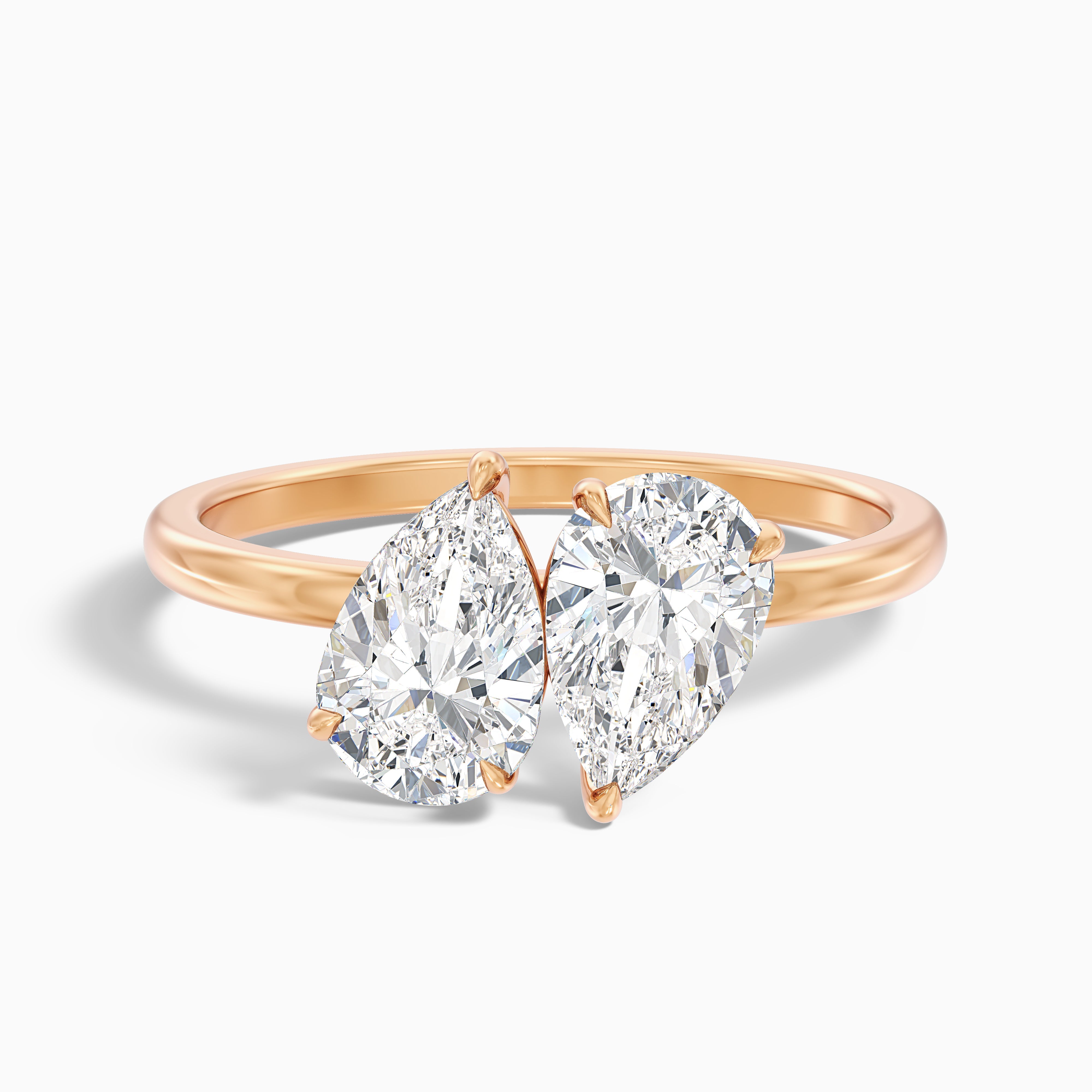 Customize Now
Customize Now
Moissanite Vs. Other Gemstones

Understanding how Moissanite compares to other gemstone options helps clarify when it might be the ideal choice:
Compared to diamonds, Moissanite offers superior brilliance and fire at a fraction of the cost. While diamonds have the advantage of natural origin and traditional prestige, Moissanite wins on price-performance ratio and ethical sourcing guarantees.
Cubic zirconia (CZ), another diamond alternative, costs less than Moissanite but falls dramatically short in durability (8 on the Mohs scale) and longevity. CZ typically clouds and scratches over time, while Moissanite maintains its clarity and polish for decades.
White sapphire provides excellent durability (9 on the Mohs scale) but lacks the brilliance and fire of Moissanite. While it offers a subtle, understated sparkle, white sapphire can appear relatively flat and lifeless, especially in low light. Understanding where Moissanite comes from helps appreciate its unique properties compared to earth-mined alternatives.
Among precious stones that look like diamonds, Moissanite proves to be the superior choice when you prioritize maximum visual impact, excellent durability, and value for money. It's particularly well-suited for engagement rings and other significant pieces meant to last a lifetime while making a statement.
For those seeking ethical sourcing guarantees with minimal compromise on traditional diamond aesthetics, Moissanite is unmatched when compared to other precious stones that look like diamonds.
Conclusion
Moissanite is a masterpiece of both science and aesthetics, a gem that will provide unsurpassed beauty and durability, value, but also will eliminate ethical and environmental concerns. Whether you are attracted by its unequalled brilliance and fire, its remarkable strength, or its untainted origin, Moissanite offers a great alternative to diamond jewelry.
As more and more consumers learn about its unique blend of features, this extraordinary gemstone remains ever-brighter in the jewelry scene. Find the best discounts on Moissanite exclusively at CaratBee. We connect you to ethically sourced, lab-grown luxury, whether you are looking for a beautiful engagement ring or a beautiful piece to wear every day. Shop today and shine brighter without feeling bad.

